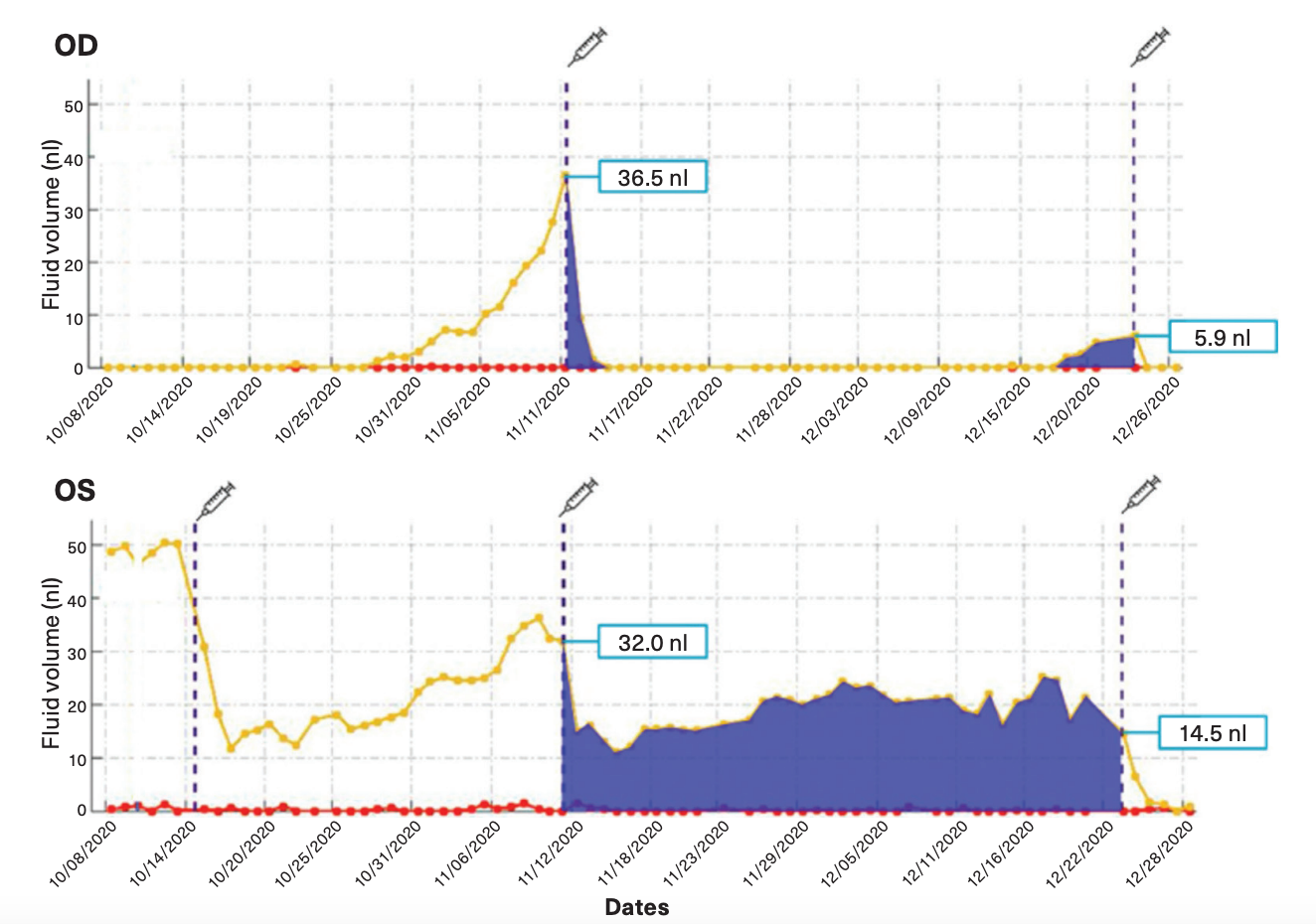by: Lynda Charters
Patients can get real-time disease monitoring with self-operated device.
Reviewed by Anat Loewenstein, MD
Such daily monitoring can result in fewer office visits, earlier detection of reoccurrence of fluid resulting in faster retreatment, and elimination of unnecessary routine injections of antivascular endothelial growth factor (VEGF) therapy, according to senior author Anat Loewenstein, MD, from the Division of Ophthalmology at Tel Aviv Sourasky Medical Center and the Sackler Faculty of Medicine at Tel Aviv University in Tel Aviv, Israel.
Loewenstein and her colleagues evaluated the performance of the home-monitoring technology that includes a spectral-domain optical coherence tomography (OCT) device by which patients perform self-imaging, automated uploading of data, and a deep learning algorithm for automated OCT analysis.
The goals of the study, she explained, were to evaluate the technology’s performance in daily image acquisition and automated analysis and to characterize the dynamics of retinal fluid exudation in patients with neovascular AMD.
Pilot study

Intraretinal fluid (red) and subretinal fluid (yellow) volume trajectories from Notal OCT Analyzer segmentation of daily Home OCT self-images of a patient’s right and left eyes. Retinal fluid exposure described by the area under the curve between treatments (syringe) differs significantly between eyes despite similar fluid volumes measured on the day of office treatment visits, illustrating the medical insights gained from daily OCT imaging at home. (Data courtesy of Notal Vision Inc)
This prospective, observational longitudinal study included 4 patients (mean age, 73.8 years) with unilateral or bilateral neovascular AMD who were being treated with anti-VEGF therapy.
The participants monitored themselves at home using the Home OCT device for up to 3 months…….
Read more: https://www.modernretina.com/view/wet-amd-home-monitoring-systems-provide-high-quality-scans
Source: Modern Retina
